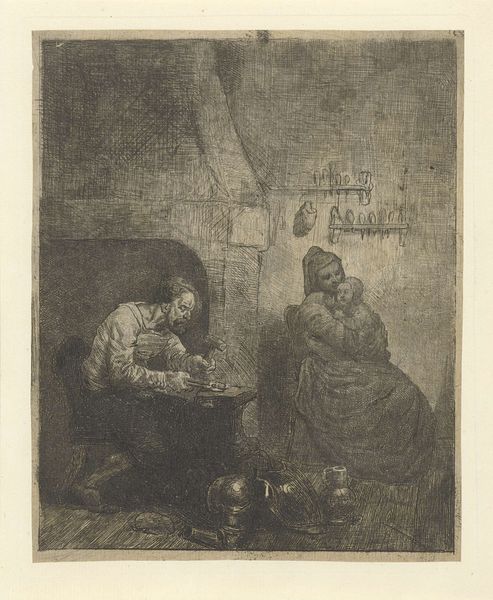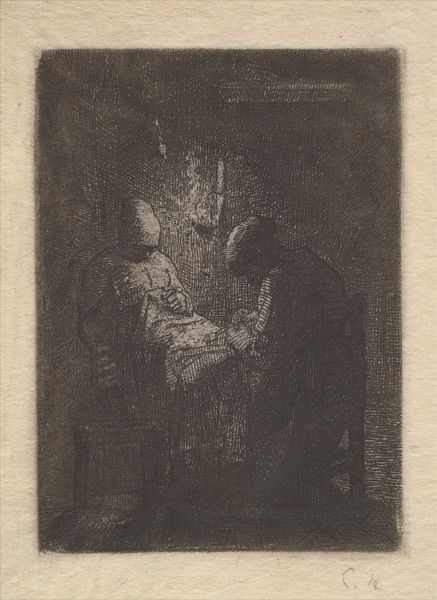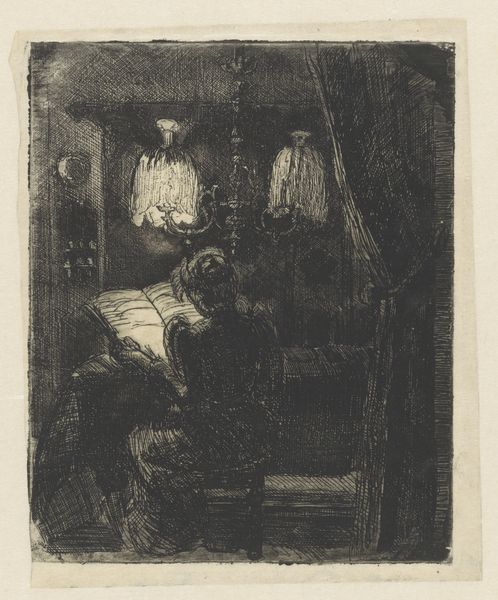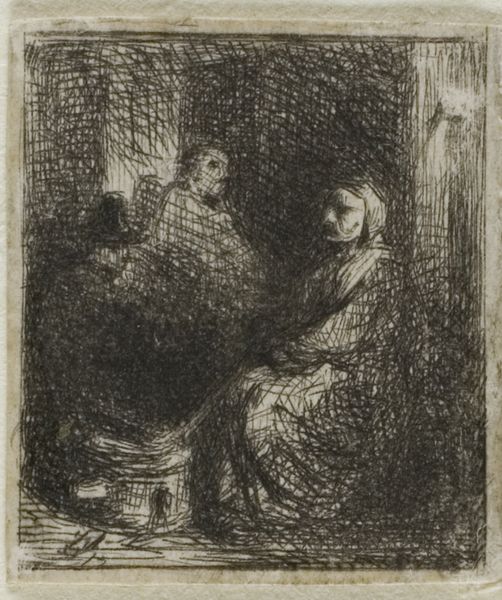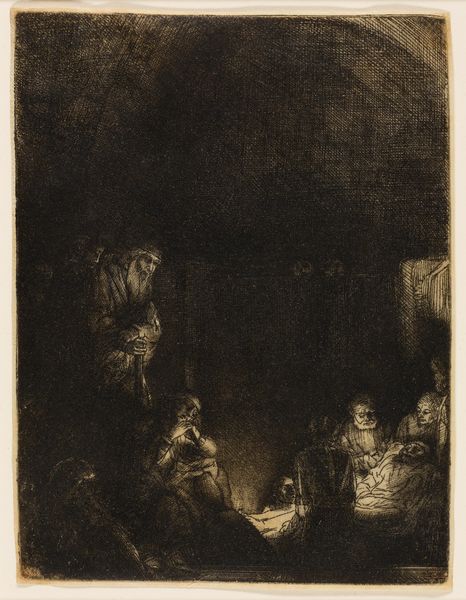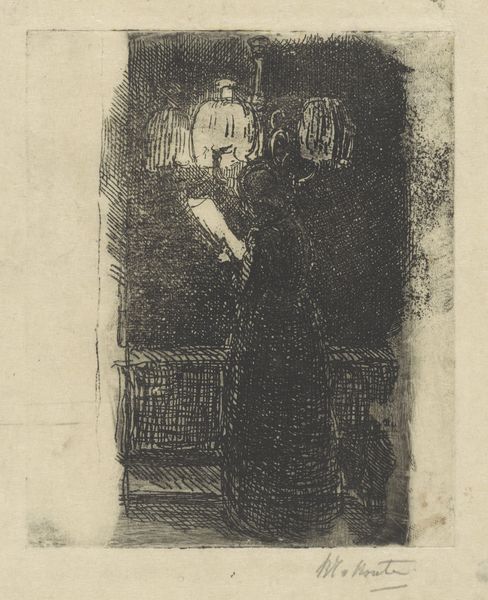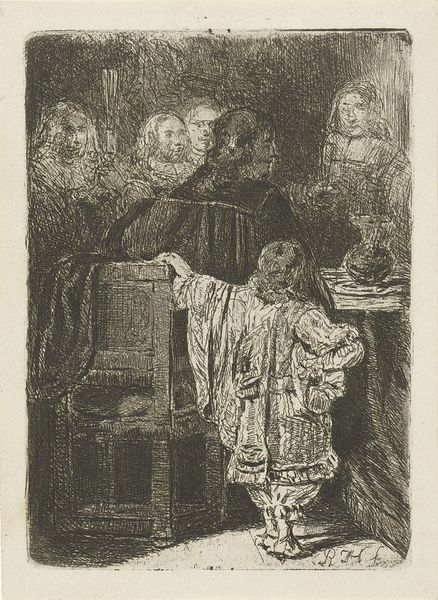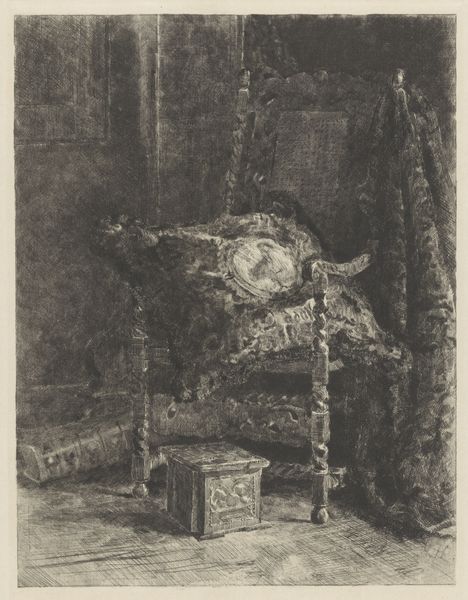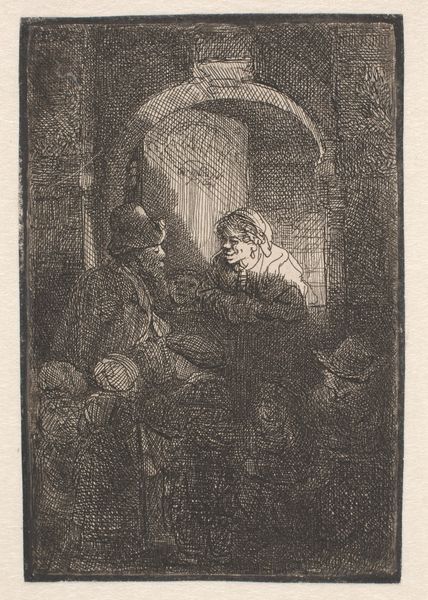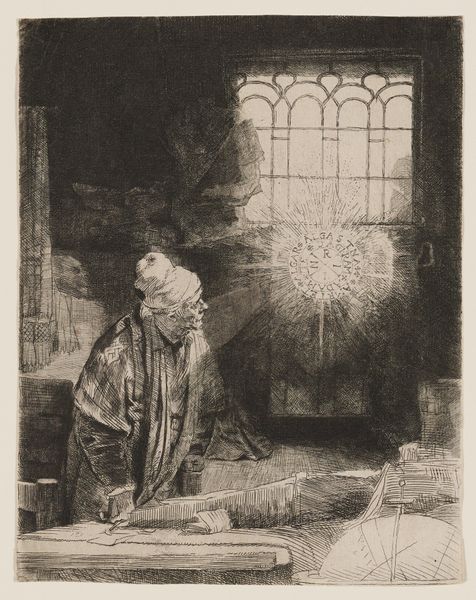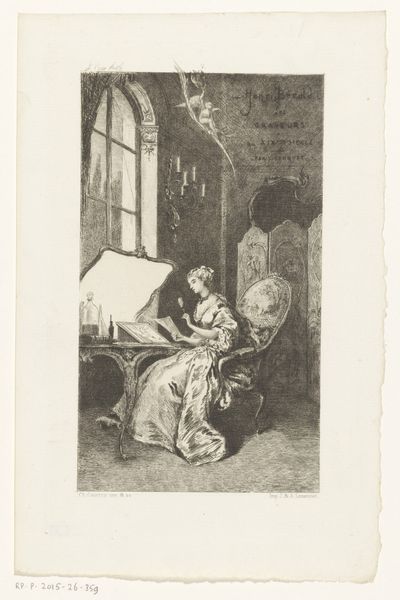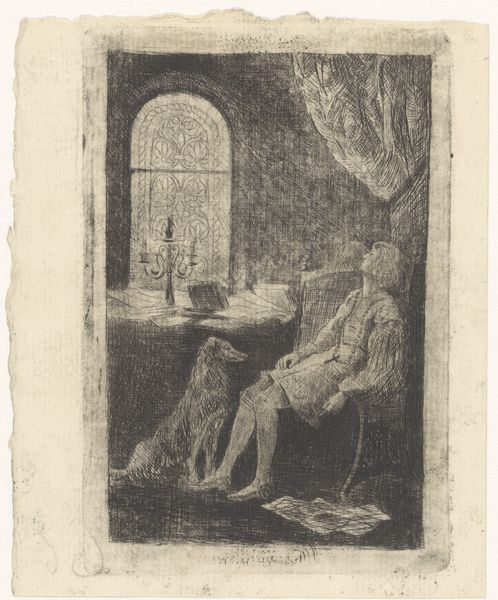
Dimensions: plate: 5 × 10.7 cm (1 15/16 × 4 3/16 in.) sheet: 19.8 × 14.7 cm (7 13/16 × 5 13/16 in.)
Copyright: National Gallery of Art: CC0 1.0
Curator: I'm immediately drawn to the texture. There's an almost palpable weight to the ink in this etching, creating a feeling of density, especially in the shadows. Editor: That’s a keen observation. Jean-François Millet created “Evening (La veillée)” in 1856, using the etching process to capture an intimate domestic scene. We see two figures bathed in the dim light, presumably engaged in needlework, set against a backdrop of rustic interior. Curator: “Intimate” is the key word. Given its creation date, can we unpack Millet's representation of women and labor in mid-19th century rural France? What socioeconomic circumstances framed this nightly scene, and what power dynamics are implicit in the tasks at hand? Editor: Certainly. The focus on everyday activities of peasants aligns with the Realist movement emerging at the time, moving away from romanticized visions of rural life to depict its realities. Note the careful rendering of textiles, for example, underscoring their tangible presence and significance in the lives of those depicted. We could explore the materials available, how the candle illuminates specific tasks tied to production in their limited resources. Curator: Absolutely, the distribution of light speaks to that access and control. But what about the figures' emotional labor? What stories might this scene suggest, regarding issues of family, tradition, or even social resistance? The artist subtly presents a sense of women’s agency amidst the structures of their community. Editor: From a material perspective, we see that women at the heart of production—making, mending. It brings up so many interesting questions. Were these skills passed down? What did this work mean for their contributions to the family unit, as they produced and possibly sold these goods at market? Curator: I concur that those issues of women's agency and traditional roles must be considered alongside their financial and cultural empowerment as female laborers. The work, presented outside any official or traditional historic narratives, serves as the key aspect that promotes agency and even independence in the figures' identities. Editor: Precisely. Millet forces us to examine not just what's being depicted, but *how* it's made, what that making implies, and the labor it represents. Curator: So true. Considering that intersectional analysis offers new means of understanding our past, while helping forge a way towards a more comprehensive, diverse, equitable and inclusive present and future. Editor: I agree, as the work prompts important questions about skill, craft and the complex material networks that create this rich image and connect us to these people over the ages.
Comments
No comments
Be the first to comment and join the conversation on the ultimate creative platform.
